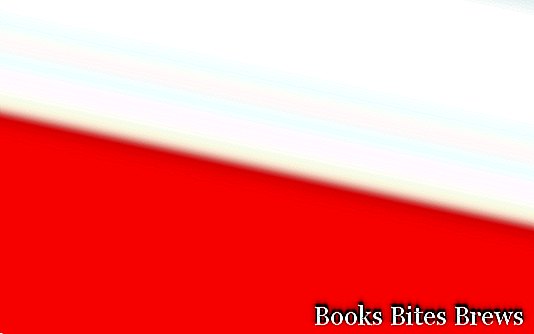Useful information about Poland, including all the things to know before leaving for a trip or a holiday in the state of Central Europe that has Warsaw as its capital.
Poland in a nutshell
- Capital: Warsaw
- Area in sq km: 312,683 sq km
- Population: 38,081,970 (first half 2007)
- Religion: Catholic majority
Where is it
Poland is a central European state with the capital Warsaw, which borders Germany to the west, the Czech Republic and Slovakia to the south, Ukraine and Belarus to the east, Lithuania and the Russian province of Kaliningrad to the north east. .
Origin of the name
The name Poland derives from the name of the Polanie tribe who lived in the Warta river basin and which means people who work the fields.
Territory
Poland is naturally divided into 3 territorial areas from north to south. The northern belt is bathed by the Baltic Sea, with a 491 km long low coast characterized by recurrent and vast lagoons, divided by the sea by sandbones, and coastal lakes.
In inland areas of Poland, mostly covered with forests and rich in lakes, there are flat or slightly hilly terrains with average heights below two hundred meters. The region of the lakes includes the Bialowieza forest and the Masurian lakes of glacial formation on the north-east border on the border with Belarus, the main ones being Lake Sniardwy and Lake Mamry.
North of the rivers Warta and Notec up to the border with the northwestern Baltic coastal region is the Pomeranian region. In the central belt there are instead extensive and fertile soils of the flood plains of the Oder and Vistula rivers, often characterized by lakes and peat bogs.
On the contrary, the southern belt is characterized by foothills and by the two mountain ranges of the Western Carpathians and the Bohemian massif. The mountain ranges of the Sudetes and the Carpathians mark the southern border of Poland. The highest altitude is Mount Rysy (2,499 m.), Which is located in the Tatra Mountains, the highest part of the Carpathians.
Hydrography
Poland's hydrographic network mainly consists of the basins of the Oder and Vistula rivers. The longest river is the Vistula which originates in the Western Beskid Mountains and before flowing into the Gulf of Gdansk, in the Baltic Sea, receives the waters of numerous tributaries including the Bug, the San and the Narew. The Oder was born in the Sudeten Mountains in Moravian territory and flows into the Gulf of Pomerania enriched by the waters of the Warta river, its largest tributary, which in turn has Nysa and Notec as its tributaries. The result of ancient glaciations is the presence of numerous lakes, especially in the northern part of the country. The main ones are Lake Sniardwy and Lake Mamry, which are located in the Masuria region.
Climate
In Poland, continental currents arrive from the east, bringing harsh winters and hot and dry summers, maritime influences characterized by not too cold winters and humid summers enter from the west.
The clash of these currents in addition to making the sky cloudy for many days of the year, causes sudden changes and different weather conditions depending on the area, since the air masses that affect this country, moving freely on its territory without finding natural barriers of relief, cause rather rapid climatic changes.
Population
The population of Poland is made up of Poles and small ethnic minorities of Germans, Ukrainians, Lithuanians, Jews and Belarusians.
Recommended readings- Warsaw (Poland): what to see in the capital
- Sopot (Poland): what to see
- Hel (Poland): what to see in the peninsula
- Poland: useful information
- Krakow (Poland): what to see
Time zone
In Poland the time is the same as in Italy.
Spoken language
The official language of Poland is Polish.
Economy
Poland's entry into the European Union in 2004 positively contributes to its economic growth. The country has already achieved good results in economic development, but the implementation of new tax and economic reforms would be useful for a further step forward.
Agriculture, which plays an important role thanks to the many small agricultural owners, has little impact on the production of income, which mostly comes from the tertiary sector, in particular from the banking system, and to a lesser extent also from the secondary sector mainly represented by the 'manufacturing industry.
Significant production and export of coal. Other natural resources are lignite, sulfur, copper, zinc, lead, rock salt and methane. The main crops are wheat, rye, potatoes, sugar beet, flax and rapeseed. As for breeding, mainly cattle, pigs and courtyard animals are treated. Three natural resources to remember also the presence of extensive forests.
When to go
The best time to visit Poland is from late May to late September.The winter months, accompanied by frequent snowfall, are suitable for a ski holiday in the Tatra Mountains or for a fascinating visit to the cities.
Necessary documents
In order to enter Poland, Italian citizens need an identity card valid for travel abroad or a passport. The country is part of the European Union and adheres to the Schengen agreement.
Phone
- The international code to call from Italy to Poland is: 0048
- The international prefix for calling from Poland to Italy is: 0039
The coverage field for mobile phones is good.
Electricity
The electric current in Poland is 230 V 50 Hz. Sockets type C and type E.
Currency
The official currency of Poland is the Zloty. Credit cards are generally accepted. It is possible to exchange currency at banks, hotels or at ATMs.
How to get
By air
Ryanair operates various connections between Italy and Poland.
Car
The route to reach Poland by car passes through Tarvisio, continues to Austria, Slovakia and the Czech Republic.
Bus
The Eurolines company connects several Italian cities to various places in Poland using its grand tourism buses.




